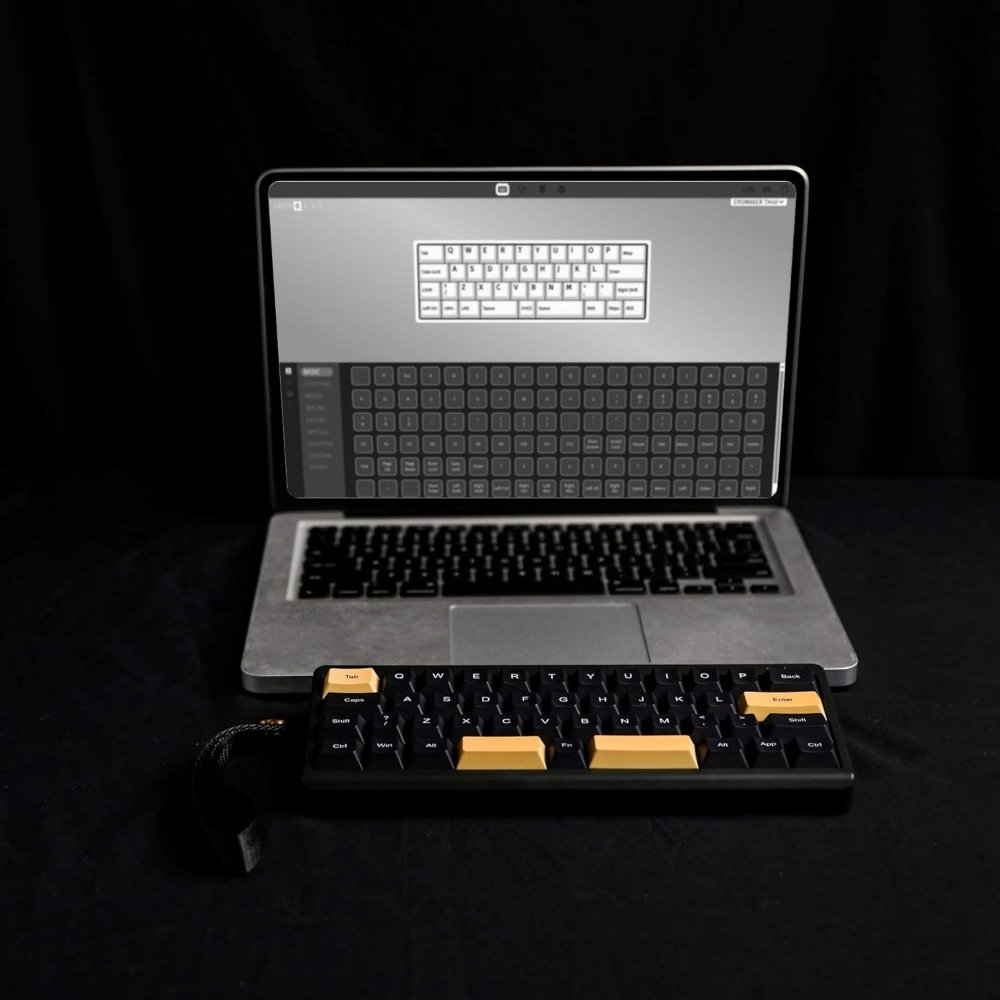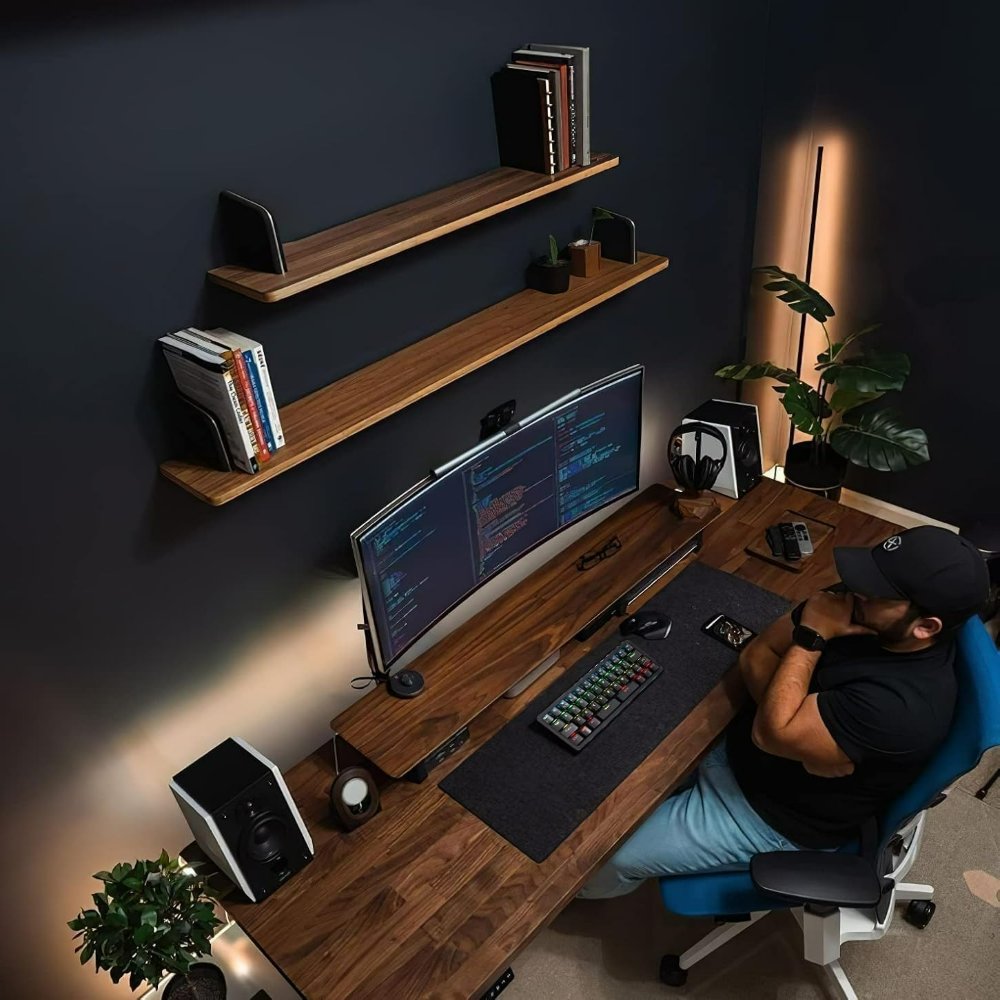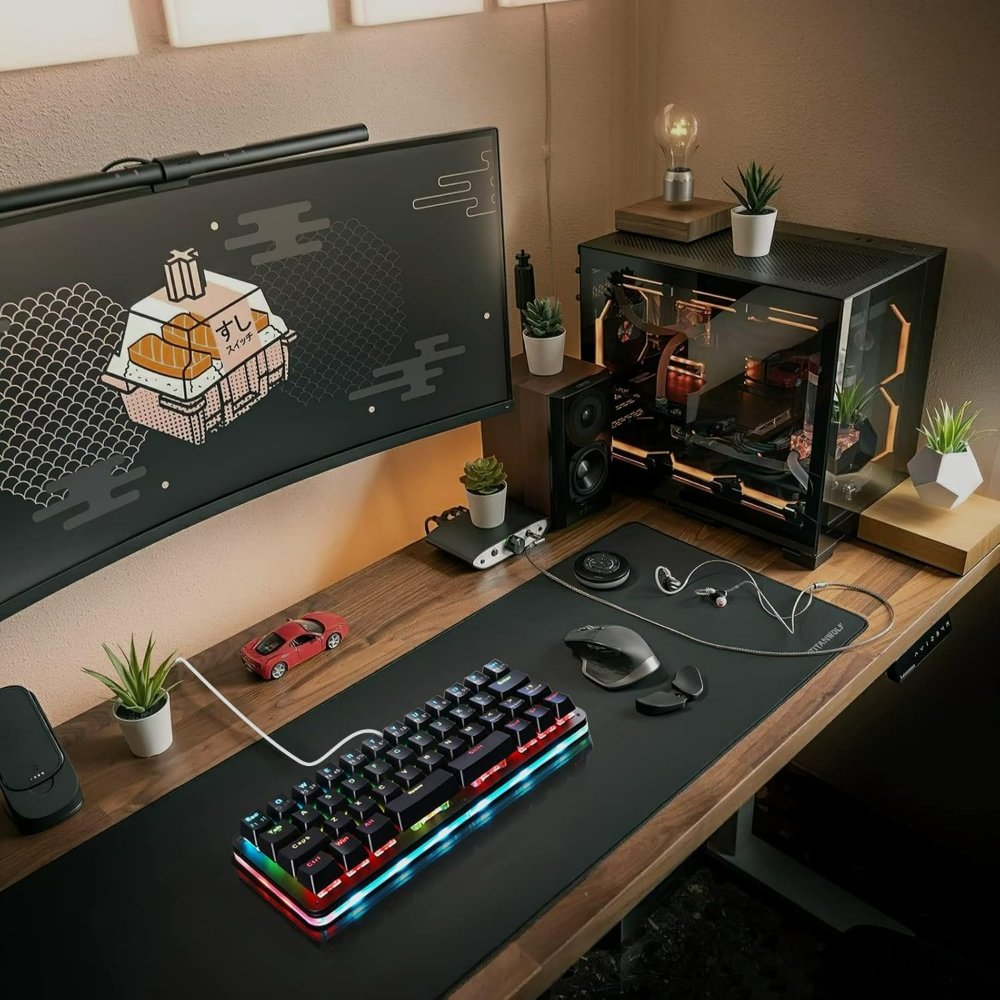What is a 40% Keyboard?
A 40% keyboard is a compact, efficient typing solution. It trims away the numeric keypad, function row, and sometimes even arrow keys. The result is a smaller, more manageable keyboard that focuses on the essentials.
Each key often performs multiple functions through layers. This design allows the 40% keyboard to retain versatility without sacrificing space. It is ideal for minimalists or those with limited desk space. Its simplicity is deceptive; a 40% keyboard can pack the power of a full-size board. Users activate different character sets and commands with combination presses.
These keyboards have a loyal following among enthusiasts. They appreciate the blend of portability, functionality, and clean aesthetics. A 40% keyboard represents a lifestyle choice, marrying form with function and simplicity with efficiency.

Benefits of a 40% Keyboard
The advantages of embracing a 40% keyboard are numerous, making it a favorite among minimalists. Below are the key benefits that have contributed to its popularity.
Space-Saving Design: By eliminating the numeric keypad and the function row, a 40% keyboard’s compact size saves valuable desk space. This is crucial for users who operate in small work areas or prefer an uncluttered environment.
Increased Portability: Its reduced size and weight make the 40% keyboard exceptionally portable. It’s ideal for those who travel frequently or work from different locations and need to carry their keyboard along.
Efficient Typing: Less finger movement is required to reach all keys, which can lead to increased typing efficiency and speed. This efficiency benefits programmers, writers, and any user who relies on keyboard shortcuts.
Aesthetic Appeal: A 40% keyboard offers a visually pleasing workspace. Its minimalist design pairs well with modern decor, favoring clean lines over excess functionality that is often unused.
Customizability: Users can often program layers and keys to suit their typing habits. This personalize experience is a major draw for those who demand a keyboard that fits their workflow perfectly.
Learning Curve: While it may seem daunting at first, many users report that the learning curve ultimately leads to better typing habits and an increased understanding of their keyboard’s layout.
Ergonomics: A smaller keyboard means hands and arms stay closer together. This can help to reduce strain and promote a more natural typing posture, which is beneficial for long-term comfort.
By integrating a 40% keyboard into their setup, users enjoy a blend of practicality and elegance that reflects the essence of minimalism. The balance between form and functionality is clear with this innovative typing solution.
How a 40% Keyboard Enhances Productivity
The switch to a 40% keyboard can be a game-changer in how we approach our workspace and workflow. Let’s explore the specific ways a smaller form factor can lead to greater productivity.
More Desk Real Estate for Essential Tasks: A 40% keyboard frees up a larger area of your desk. You can use this space for note-taking, reading documents, or simply enjoying a less cluttered workspace.
Optimized Key Placement: The keys on a 40% keyboard are within easy reach. You don’t have to stretch your fingers far, which speeds up your typing and reduces errors.
Simplified Keyboard Shortcuts: Many users find that the streamlined design encourages the use of keyboard shortcuts. Shortcuts save time on repetitive tasks, making you work smarter, not harder.
Fewer Distractions: With fewer keys, a 40% keyboard helps you focus on the key inputs essential to your work. This simplicity prevents unnecessary distractions and promotes concentration.
Quicker Adaptation to Typing Habits: Once you overcome the initial learning curve, you may find it easier to remember key placements. Frequently used actions become muscle memory, leading to more efficient typing.
Easier to Maintain a Clean Workspace: It’s simpler to clean and organize a small keyboard and the surrounding area. A tidy environment has been shown to improve focus and efficiency.
Each of these points demonstrates how a 40% keyboard can contribute significantly to a more productive and efficient work environment. By rethinking our interaction with our tools, we can create spaces that are not only efficient but conducive to our best work.

Key Considerations When Choosing a 40% Keyboard
When diving into the world of 40% keyboards, certain factors stand out. It’s important to make a well-informed decision to enjoy the full benefits that these compact devices offer. Here’s what to keep in mind:
Switch Type: The feel of your keystrokes hinges on the switch type. Options vary from mechanical to membrane, with distinct tactile experiences. Assess your preference for a soft or clicky response.
Key Layout: Familiarize yourself with the standard 40% layout. Ensure that it aligns with your typing needs. Custom layouts may be available, but require more time to adapt.
Programmability: A 40% keyboard should offer layer programming. This lets you assign multiple functions to a single key for optimal efficiency.
Build Quality: Look for a robust design. A solid build prolongs keyboard life and sustains performance. Read reviews to dig into real-world user experiences.
Connectivity: Decide between wired or wireless options. Consider the reliability and freedom that each type provides for your workspace.
Compatibility: Make sure the keyboard works with your computer’s operating system. Avoid assuming that all keyboards fit all devices.
Price Point: Budget plays a role. Weigh the cost against the features offered. Remember, higher price does not always mean better quality.
Brand Reputation: Research the brand’s standing. Customer support, warranty, and user community can sway your choice.
Choosing a 40% keyboard is about balancing your needs with the characteristics of the device. Take your time to select one that fits seamlessly into your lifestyle and enhances your productivity.
Popular 40% Keyboard Models and Brands
The market for 40% keyboards offers a variety of models and brands catering to different preferences. Here are some standout options that have gained popularity among minimalist keyboard enthusiasts.
Vortex Core – This model is well-known for its sturdy build and out-of-the-box programmability. It’s a favorite for those who want a 40% keyboard that’s ready for immediate use.
OLKB Planck – OLKB (Ortholinear Keyboards) produces the Planck, which features a unique grid layout. It provides a distinctive typing experience and is highly customizable.
Magicforce 40 – For budget-conscious users, the Magicforce 40 offers a solid mechanical typing experience. It balances cost and quality, making it a great entry-level choice.
MechMini 2 – A customizable option, the MechMini 2 allows users to tinker with layouts and keycap sets. Its compact size doesn’t compromise on performance or aesthetic appeal.
JD40 and JD45 – These are for the true hobbyist. They often come as kits that require assembly, but the end result is a highly personalized 40% keyboard.
While these are some of the more well-known brands, the community also supports lesser-known manufacturers who offer unique designs and custom parts. When searching for the right 40% keyboard, exploring different makes and models will help you understand the nuances in features and typing experiences. Whatever your choice, ensure it aligns with the factors previously discussed like switch type, build quality, and programmability to fully enjoy the minimalist typing journey.

Customizing Your 40% Keyboard Experience
One of the joys of owning a 40% keyboard is the high degree of customization available. Here are some tips to tailor your 40% keyboard to your personal needs and preferences.
Choose Your Keycaps Carefully: Keycaps come in various shapes, sizes, and materials. Select keycaps that not only match your aesthetic but also feel comfortable under your fingers.
Program Your Layers: Most 40% keyboards allow for layer programming. This means assigning multiple functions to a single key. Take advantage of this to make the keyboard fit your workflow.
Firmware Options: Explore different firmware solutions that can extend the capabilities of your keyboard. This includes QMK, which is a popular choice among enthusiasts for its customization possibilities.
Sound Dampening: Modify the sound of your keystrokes by adding o-rings or using silent switches. This customization can make typing less disruptive in quiet environments.
Experiment with Layouts: Don’t be afraid to try out different key layouts. Some may prefer a staggered layout while others may thrive with an ortholinear setup. Find what works best for you.
Personalize with Accessories: Add a personal touch with custom USB cables, artisan keycaps, or a stylish carrying case. These accessories can enhance both the look and the portability of your keyboard.
Invest Time in Learning: Dedicate time to get accustomed to your new setup. It will pay off with greater speed and comfort as you use your keyboard.
Connect with the Community: Tap into the 40% keyboard community for advice, custom layouts, and firmware tips. They are a valuable resource for both beginners and experienced users.
Customizing your 40% keyboard can transform your typing experience into something truly unique. By taking the time to personalize it, you create a tool that not only looks good but also increases your productivity and typing enjoyment.
Transitioning from a Full-Size to a 40% Keyboard
Migrating to a 40% keyboard from a full-size can seem like a daunting task. Yet, the transition carries many benefits that align with a minimalist lifestyle. Here are some insights and tips to make the switch smoother and more rewarding.
Take Time to Adjust: Give yourself space to get used to the new form factor. It won’t feel natural overnight. Start with simple tasks to build muscle memory.
Stay Patient and Practice: Your typing speed might dip initially. That’s okay. With practice, your fingers will learn to dance across the smaller layout more efficiently.
Utilize Online Resources: Look for typing tutors or software designed for compact keyboards. They can offer tailored exercises to help you adapt faster.
Start with Simple Projects: Use your 40% keyboard for less demanding tasks at first. As you gain confidence, tackle more complex work.
Remember the Benefits: Keep in mind why you chose to switch. Whether it’s space, portability, or a personalized typing experience, focus on these advantages to stay motivated.
Customize and Experiment: Play with the layout and programming of your keyboard. Find a setup that mirrors your typing habits. It will make the transition less intimidating.
Reach Out to the Community: Connect with others who have made the switch. They can offer advice, support, and reassurance as you adapt to your new keyboard.
Be Open to Change: Embrace the compactness. A 40% keyboard simplifies your workspace. This minimalism can lead to a more organized and focused approach to tasks.
Transitioning to a 40% keyboard takes time and effort, but the result is a more streamlined, efficient workstation. As with any change, the initial challenge paves the way to a rewarding outcome.
Where to Buy and What to Expect in Pricing
When searching for a 40% keyboard, you have various buying options. You can find these keyboards at online retailers, directly from manufacturer websites, or through community marketplaces. Here are some popular online platforms to start your search:
- Amazon: Known for a wide selection, Amazon offers both budget and premium 40% keyboards.
- MechanicalKeyboards.com: Specializes in mechanical keyboards, including a range of 40% models.
- Massdrop: Hosts group buys for custom 40% keyboards, which can provide savings.
- eBay: A place to find both new and used 40% keyboards, sometimes at lower prices.
Prices for a 40% keyboard can vary greatly depending on brand, quality, and features. Here’s what you can generally expect:
- Budget Options: Entry-level models such as the Magicforce 40 can start around $30-$50.
- Mid-Range Models: Keyboards like the Vortex Core may cost between $70-$120.
- High-End Customizations: Premium and custom-built 40% keyboards, such as the OLKB Planck, can exceed $150, particularly with additional mods and accessories.
Remember to factor in shipping costs and potential custom fees if ordering from overseas. Be sure to read reviews and compare prices to ensure you’re getting a good deal. Also, watch out for sales or second-hand deals in enthusiast communities for potential savings. Keep your budget and your must-have features in mind when navigating the pricing landscape of 40% keyboards.